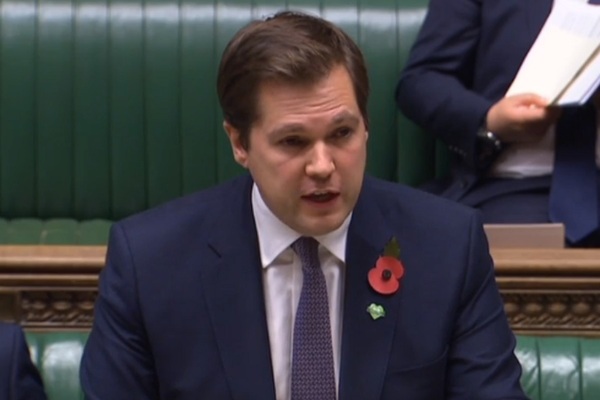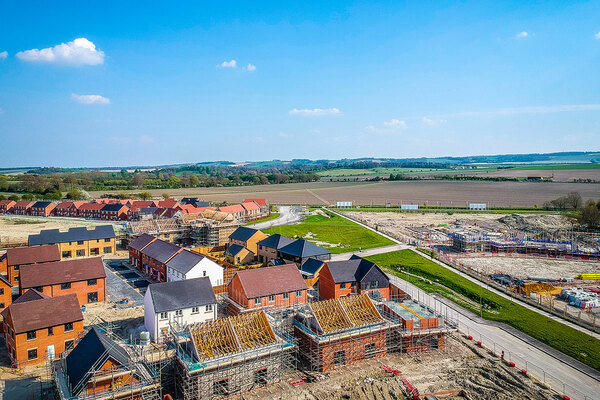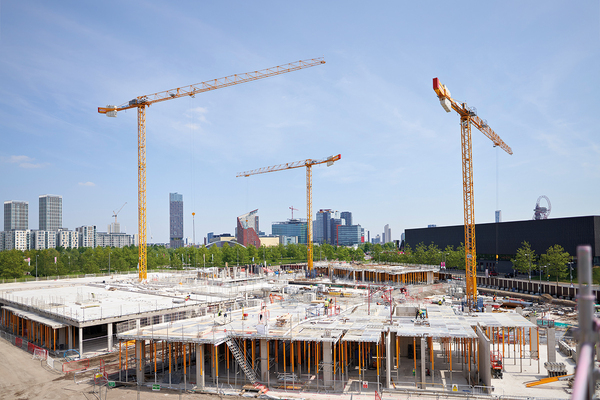The end of Section 106 could prove a transformative moment for affordable housing
The new zonal planning system in England will see Section 106 replaced with a fixed levy on development to fund infrastructure. If done badly, this could put affordable housing development at risk, writes Peter Apps
The Section 106 era is coming to an end. As part of the sweeping planning reform being imposed by housing secretary Robert Jenrick, the mechanism – which gives councils the power to demand a certain percentage of affordable housing in new schemes – will be abolished.
In its place will come an Infrastructure Levy, which will constitute a fixed sum equivalent to a portion of the final development value of the scheme. This will create a pot of cash that will fund a range of local infrastructure, including affordable housing.
This is an important moment for affordable housing delivery in England.
When Section 106 was first introduced in 2001, it delivered only around 2,000 of 33,000 overall affordable homes, with the lion’s share at the time funded by government grant.
That picture has now changed. With grant rates receding due to austerity, Section 106 has become the primary vehicle for affordable housing delivery – with 48.9% of 57,185 affordable homes built in 2018/19 coming through the mechanism.
Over the past five years, it has accounted for for 82,490 affordable homes – 46% of all those built – and has been particularly important in maintaining a supply of socially rented properties (13,458 in five years, 52% of the total).
In short, it provides a route to the delivery of affordable housing in a low-grant environment and offers local planning authorities a say on the tenure type, which can resist central government’s drive away from low-cost rented housing.
The new mechanism will have to fill that void. There is some good news. A government consultation says the plan is for the new levy to function in a way a lot like the old system - in that councils will be able to demand onsite affordable housing contributions from developers.
These will then be sold to housing providers at a discounted rate, with the sum of the discount against market value counted against the ultimate levy the developer owes.
This will be vital for maintaining affordable housing supply. It is equally vital that local planning authorities have a free hand in determining the tenure of the new homes, rather than being bounced by central government into prioritising homes for sale.
Plans to require developers to pay a levy for change of use also fills in a big hole in the current system, and should produce some welcome additional revenue.
But there are also major downsides, First, if it is linked to value, the taxes raised will be meagre in lower-value areas. This risks depriving already deprived areas of affordable housing and widening the north-south divide that this government has staked so much political capital on closing.
This seems an intractable and serious problem with the new system - amid a climate which already directs too much affordable housing funding to wealthy areas in the south.
Second, there are plans to exempt developments of less than 50 homes from affordable housing requirements - a change that looks set to come in well before the major reform of the planning system is completed (it is not due until the end of the Parliament). This is a big slice of the market and will need a robust measure to stop developers chopping up a 300 home development in six 50 home ones.
Crucially, the government (which will set the rate for the levy nationally, as either a flat rate for the whole country or various area-based figures) must make it large enough to fund the long list of infrastructure promised, as well as the current high levels of affordable housing supply.
There is justified fear here: Westminster’s instincts in recent years have leant towards incentivising the private market rather than boosting affordable supply (the 50 home threshold merely the latest example).
Affordable homes cost money, and if the value is set too low we simply won’t be seeing any of them and local authorities will have no ability to challenge.
If this does result in a depreciation of the number of homes available through the planning system, it will have a major impact on the sector. Despite a shift away from it among some of the bigger players, 40% of the 48,183 homes built or acquired by the biggest providers last year came via Section 106.
With grant rates low and the cross-subsidy model more precarious than ever, it is hard to see how some smaller organisations will be able to develop without a consistent supply of homes from the planning system
There are other ripple effects. What, for example, would become of the new for-profit entrants to the market which have staked their chips on buying up Section 106 units in bulk from developers?
Only last week, the (cross-party) Housing, Communities and Local Government Select Committee reviewed the evidence and concluded that there is “compelling evidence” of the need for 90,000 socially rented homes per year and said it should be “top of the government’s agenda” post COVID-19.
Amid the excitement over tearing up the planning system, this call must not be forgotten.
Peter Apps, deputy editor, Inside Housing
Update: at 10am on 6.8.2020
This article was updated to reflect the fact that the new system will continue to provide onsite affordable housing, as outlined in the government consultation document














